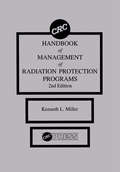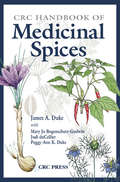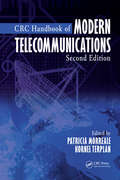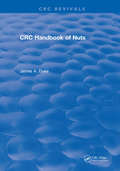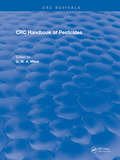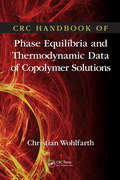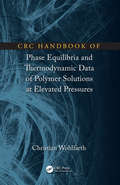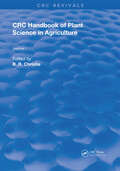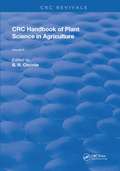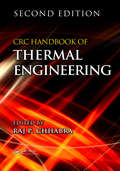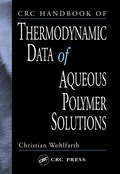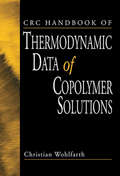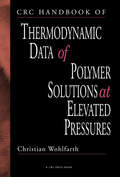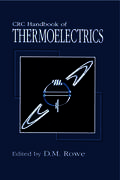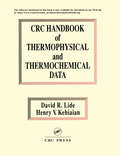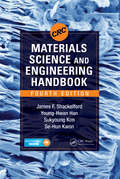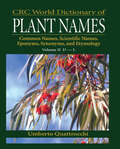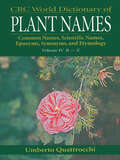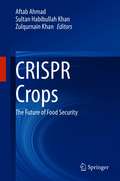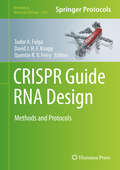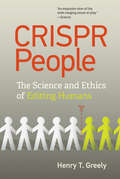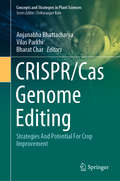- Table View
- List View
CRC Handbook of Management of Radiation Protection Programs, Second Edition
by Kenneth L. MillerCRC Handbook of Management of Radiation Protection Programs, 2nd Edition, is unique in that it offers practical guidance for managing various aspects of radiation protection programs ranging from the daily operation of a health physics office to the preparation of radiation experts for court appearances as professional witnesses. The book also covers such topics as organization and management of nonionizing radiation safety programs (with special emphasis on laser safety programs) and management of radioactive waste, personnel monitoring programs, radiation accident victims, internal exposure, relative radiotoxicity and radiation therapy patients. Other chapters discuss handling radiation accidents and education and training requirements for radiation protection. Legal aspects covered in the book include the history of radiation court cases, legal implications of record keeping, and preparation for court appearances. CRC Handbook of Management of Radiation Protection Programs, 2nd Edition will be a valuable reference resource for medical and health physicists, industrial hygienists, physicians, nuclear engineers, radiation protection regulators, radiation emergency management agents, radiation safety committees, and managers of facilities using ionizing and nonionizing radiation sources.
CRC Handbook of Materials Science: Material Composites and Refractory Materials (Routledge Revivals #2)
by Charles T. LynchPublished in 1974: The CRC Handbook of Materials Science provides a current and readily accessible guide to the physical properties of solid state and structural materials.
CRC Handbook of Medicinal Spices
by James A. Duke Mary Jo Bogenschutz-Godwin Judi DuCellier Peggy-Ann K. Duke"Let food be your medicine, medicine your food."-Hippocrates, 2400 B.C.When the "Father of Medicine" uttered those famous words, spices were as important for medicine, embalming, preserving food, and masking bad odors as they were for more mundane culinary matters. Author James A. Duke predicts that spices such as capsicum, cinnamon, garlic, ginger
CRC Handbook of Modern Telecommunications
by Kornel Terplan Patricia MorrealeAddressing the most dynamic areas of the ever-changing telecommunications landscape, the second edition of the bestselling CRC Handbook of Modern Telecommunications once again brings together the top minds and industry pioneers in wireless communication networks, protocols, and devices. In addition to new discussions of radio frequency identification (RFID) and wireless sensor networks, including cognitive radio networks, this important reference systematically addresses network management and administration, as well as network organization and governance, topics that have evolved since the development of the first edition. Extensively updated and expanded, this second edition provides new information on: Wireless sensor networks RFID Architectures Intelligent Support Systems Service delivery integration with the Internet Information life cycle and service level management Management of emerging technologies Web performance management Business intelligence and analytics The text details the latest in voice communication techniques, advanced communication concepts, network organization, governance, traffic management, and emerging trends. This comprehensive handbook provides telecommunications professionals across all fields with ready access to the knowledge they require and arms them with the understanding of the role that evolving technologies will play in the development of the telecommunications systems of tomorrow.
CRC Handbook of Nuts
by James A. DukeOver one hundred of the world's most important species of nuts are systematically accounted in this informative handbook. The text defines nuts and discusses their economic and nutritional value. For easy reference; there is an illustrated account of each nut by species, arranged alphabetically by scientific name. Each account includes the family name, several colloquial names, and paragraphs on uses, folk medicine, chemistry, germplasm, distribution, ecol-ogy, cultivation, harvesting, yields, energy, and biotic factors.Chapters Describe:UsesFolk medicineChemistryGermplasmDistributionEcologyCultivationHarvestingYields and economicsEnergyBiotic factors
CRC Handbook of Pesticides
by G.W.A. MilneThis new compilation focuses on 386 of the most commonly used pesticides recently registered by the EPA. The structural and molecular formulas are listed for each chemical along with its Chemical Abstracts Registry Number (CAS RN) and, when available, its number in the Merck Index (Eleventh Edition). This invaluable reference provides the various English and foreign chemical names, trivial names, synonyms, and trade names for each pesticide. A handy chemical name index also presents this information in a readily accessible format. The pesticide's physical properties are summarized and data pertaining to the compound's acute toxicity in various species are given. This data has been drawn from the Registry of Toxic Effects of Chemical Substances. Finally, for each of the pesticide chemicals there is a reference to the appropriate Section of the Code of Federal Regulations, 40 CFR 180, where the various crop tolerances may be located.
CRC Handbook of Phase Equilibria and Thermodynamic Data of Aqueous Polymer Solutions
by Christian WohlfarthA large amount of experimental data has been published since the debut of the original CRC Handbook of Thermodynamic Data of Aqueous Polymer Solutions. Incorporating new and updated material, the CRC Handbook of Phase Equilibria and Thermodynamic Data of Aqueous Polymer Solutions provides a comprehensive collection of thermodynamic data of polymer
CRC Handbook of Phase Equilibria and Thermodynamic Data of Copolymer Solutions
by Christian WohlfarthTen years after the debut of the expansive CRC Handbook of Thermodynamic Data of Copolymer Solutions, The CRC Handbook of Phase Equilibria and Thermodynamic Data of Copolymer Solutions updates and expands the world's first comprehensive source of this vital data. Author Christian Wohlfarth, a chemical thermodynamicist specializing in phase equilibr
CRC Handbook of Phase Equilibria and Thermodynamic Data of Polymer Solutions at Elevated Pressures
by Christian WohlfarthThere is a continuing interest in thermodynamic properties of polymer solutions at elevated pressures. This updated book provides newly published experimental data from the last decade. It includes nearly 500 newly published references containing approximately 175 new vapor-liquid equilibrium data sets, 25 new liquid-liquid equilibrium data sets, 540 new high-pressure fluid phase equilibrium data sets, 60 new data sets describing PVT properties of polymers, and 20 new data sets with densities or excess volumes.
CRC Handbook of Plant Science in Agriculture (Routledge Revivals #1)
by B.R. ChristieFirst published in 1987, this two-volume set is an exhaustive compilation of the most recent data on economically important crops. Volume I presents information on genetics, botany and growth of crop plants, while Volume II covers the production of Crops and their utilization.
CRC Handbook of Plant Science in Agriculture (Routledge Revivals #2)
by A. A. HansonFirst published in 1987, this two-volume set is an exhaustive compilation of the most recent data on economically important crops. Volume I presents information on genetics, botany and growth of crop plants, while Volume II covers the production of Crops and their utilization.
CRC Handbook of Tables for Applied Engineering Science
by Ray E. BolzNew tables in this edition cover lasers, radiation, cryogenics, ultra-sonics, semi-conductors, high-vacuum techniques, eutectic alloys, and organic and inorganic surface coating. Another major addition is expansion of the sections on engineering materials and compos-ites, with detailed indexing by name, class and usage. The special Index of Properties allows ready comparisons with respect to single property, whether physical, chemical, electrical, radiant, mechani-cal, or thermal. The user of this book is assisted by a comprehensive index, by cross references and by numerically keyed subject headings at the top of each page. Each table is self-explanatory, with units, abbreviations, and symbols clearly defined and tabular material subdivided for easy reading.
CRC Handbook of Thermal Engineering (Mechanical and Aerospace Engineering Series)
by Raj P. ChhabraThe CRC Handbook of Thermal Engineering, Second Edition, is a fully updated version of this respected reference work, with chapters written by leading experts. Its first part covers basic concepts, equations and principles of thermodynamics, heat transfer, and fluid dynamics. Following that is detailed coverage of major application areas, such as bioengineering, energy-efficient building systems, traditional and renewable energy sources, food processing, and aerospace heat transfer topics. The latest numerical and computational tools, microscale and nanoscale engineering, and new complex-structured materials are also presented. Designed for easy reference, this new edition is a must-have volume for engineers and researchers around the globe.
CRC Handbook of Thermodynamic Data of Aqueous Polymer Solutions
by Christian WohlfarthProviding the necessary basis for any developments of theoretical thermodynamic models, this book provides a complete collection of practical thermodynamic data for a variety of applications, including: basic and applied chemistry, chemical engineering, thermodynamic research, computational modeling, membrane science and technology, and environmental and green chemistry. The data -- which includes such developments as vapor-liquid and liquid-liquid equilibria, low-and high-pressure equilibrium data, enthalpic and volumetric data, and second virial coefficients -- is necessary when studying intermolecular interactions and gaining insights into the molecular nature of mixtures.
CRC Handbook of Thermodynamic Data of Copolymer Solutions
by Christian WohlfarthThermodynamic data of copolymer solutions are a necessity for industrial and laboratory processes and serve as essential tools for understanding the physical behavior of copolymer solutions, intermolecular interactions, and the molecular nature of mixtures. Scientists and engineers in both academic and industrial research need this data. This handbook compiles original data gathered from approximately 300 literature source and provides 250 vapor-pressure isotherms, 75 tables of Henry's constants, 225 data sets, and 70 PVT tables for more than 100 copolymers and 165 solvents. It is the first complete overview of this complex subject.
CRC Handbook of Thermodynamic Data of Polymer Solutions at Elevated Pressures
by Christian WohlfarthThis handbook provides the only complete collection of high-pressure thermodynamic data that is essential for understanding polymer solutions. It contains data on vapor-liquid equilibria and gas solubilities, liquid-liquid equilibria, high-pressure fluid phase equilibria for polymer systems in supercritical fluids, enthalpic and volumetric data, as well as second virial coefficients all at elevated pressures. It covers all areas needed by researchers and engineers who handle polymer systems in supercritical fluids; materials science and technological applications such as computerized predictive packages; and chemical and biochemical processes, such as synthesis and characterization, fractionation, separation, purification, and finishing of polymers and related materials.
CRC Handbook of Thermoelectrics
by D. M. RoweThermoelectrics is the science and technology associated with thermoelectric converters, that is, the generation of electrical power by the Seebeck effect and refrigeration by the Peltier effect. Thermoelectric generators are being used in increasing numbers to provide electrical power in medical, military, and deep space applications where combinations of their desirable properties outweigh their relatively high cost and low generating efficiency. In recent years there also has been an increase in the requirement for thermoelectric coolers (Peltier devices) for use in infrared detectors and in optical communications. Information on thermoelectrics is not readily available as it is widely scattered throughout the literature. The Handbook centralizes this information in a convenient format under a single cover.Sixty of the world's foremost authorities on thermoelectrics have contributed to this Handbook. It is comprised of fifty-five chapters, a number of which contain previously unpublished material. The contents are arranged in eight sections: general principles and theoretical considerations, material preparation, measurement of thermoelectric properties, thermoelectric materials, thermoelectric generation, generator applications, thermoelectric refrigeration, and applications of thermoelectric cooling.The CRC Handbook of Thermoelectrics has a broad-based scope. It will interest researchers, technologists, and manufacturers, as well as students and the well-informed, non-specialist reader.
CRC Handbook of Thermophysical and Thermochemical Data
by David R. Lide Henry V. KehiaianThe CRC Handbook of Thermophysical and Thermochemical Data is an interactive software and handbook package that provides an invaluable source of reliable data embracing a wide range of properties of chemical substances, mixtures, and reacting systems. Use the handbook and software together to quickly, and easily generate property values at any desired temperature, pressure, or mixture composition.
CRC Materials Science and Engineering Handbook
by James F. Shackelford Young-Hwan Han Sukyoung Kim Se-Hun KwonCRC Materials Science and Engineering Handbook provides a convenient, single-volume source for physical and chemical property data on a wide range of engineering materials. As with the first three editions, this Fourth Edition contains information verified by major professional associations such as ASM International and the American Ceramic Society
CRC World Dictionary of Plant Names: Common Names, Scientific Names, Eponyms, Synonyms, and Etymology
by Umberto QuattrocchiThis volume provides the origins and meanings of the names of genera and species of extant vascular plants, with the genera arranged alphabetically from D to L.
CRC World Dictionary of Plant Names: Common Names, Scientific Names, Eponyms. Synonyms, and Etymology
by Umberto QuattrocchiThis volume provides the origins and meanings of the names of genera and species of extant vascular plants, with the genera arranged alphabetically from R to Z.
CRISPR Crops: The Future of Food Security
by Aftab Ahmad Sultan Habibullah Khan Zulqurnain KhanThis book compiles the latest applications of the cutting-edge gene editing tool CRISPR/Cas in the area of crop improvement. It begins with an introduction to the technique and its application in crop plants. Next, it gives an updated overview of available delivery methods, design tools and resources in CRISPR/Cas. The book subsequently reviews the applications of CRISPR/Cas in connection with e.g. insect stress, disease stress, abiotic stress, nutritional and yield improvement in crop plants, etc. It also discusses the various regulatory, ethical and social aspects of the technique that must be kept in mind when designing experiments. In closing, the book summarizes the status quo and outlines future prospects for the tool in crop improvement and food security.Given its scope, the book will especially benefit students and researchers in food science, biotechnology, agriculture and the plant sciences.
CRISPR Guide RNA Design: Methods and Protocols (Methods in Molecular Biology #2162)
by Tudor A. Fulga David J. H. F. Knapp Quentin R. V. FerryThis detailed volume focuses on the CRISPR-associated guide RNA and how it can be designed, modified, and validated for a broad repertoire of purposes. Beginning with a section on computational design of target-specific guide RNAs, the book continues by covering chemical modifications to alter guide RNA stability, specificity, and efficiency, as well as to create inducible guide RNAs, append additional functional domains, and express guide RNAs in a conditional manner. It concludes with methods for measuring off-target guide RNA activity. Written for the highly successful Methods in Molecular Biology series, chapters include introductions to their respective topics, lists of the necessary materials and reagents, step-by-step, readily reproducible protocols, and tips on troubleshooting and avoiding known pitfalls. Authoritative and essential, CRISPR Guide RNA Design: Methods and Protocols provides a comprehensive pipeline for guide RNA design and aims to be an invaluable resource in applying this powerful technology to basic research and therapeutic applications.
CRISPR People: The Science and Ethics of Editing Humans
by Henry T. GreelyWhat does the birth of babies whose embryos had gone through genome editing mean--for science and for all of us?In November 2018, the world was shocked to learn that two babies had been born in China with DNA edited while they were embryos--as dramatic a development in genetics as the cloning of Dolly the sheep was in 1996. In this book, Hank Greely, a leading authority on law and genetics, tells the fascinating story of this human experiment and its consequences. Greely explains what Chinese scientist He Jiankui did, how he did it, and how the public and other scientists learned about and reacted to this unprecedented genetic intervention.
CRISPR/Cas Genome Editing: Strategies And Potential For Crop Improvement (Concepts and Strategies in Plant Sciences)
by Anjanabha Bhattacharya Vilas Parkhi Bharat CharThis book offers a comprehensive collection of papers on CRISPR/Cas genome editing in connection with agriculture, climate-smart crops, food security, translational research applications, bioinformatics analysis, practical applications in cereals, floriculture crops, engineering plants for abiotic stress resistance, the intellectual landscape, regulatory framework, and policy decisions. Gathering contributions by internationally respected experts in the field of CRISPR/Cas genome editing, the book offers an essential guide for researchers, students, teachers and scientists in academia; policymakers; and public companies, private companies and cooperatives interested in understanding and/or applying CRISPR/Cas genome editing to develop new agricultural products.
